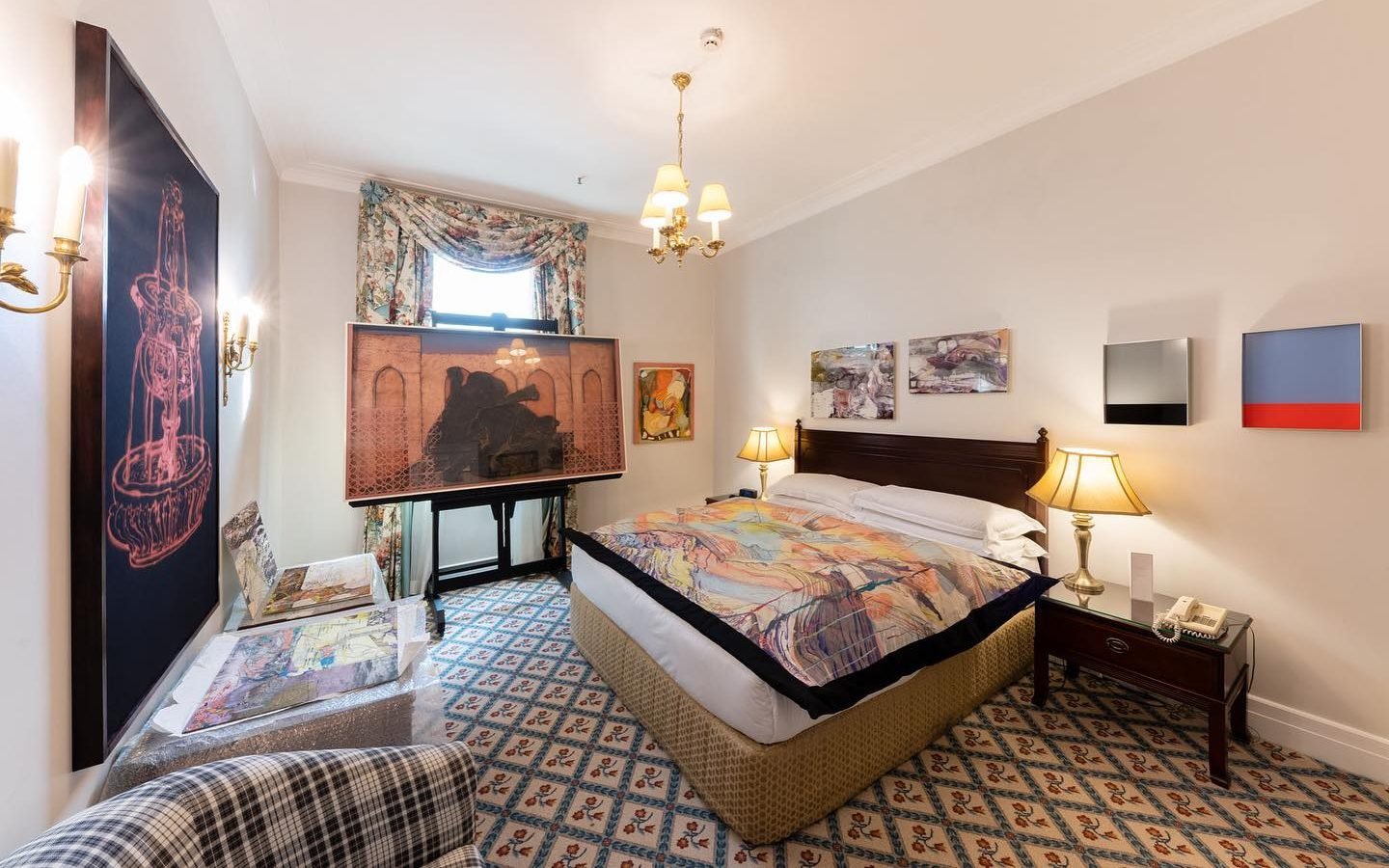 Andy Warhol (American, 1928–1987), “Flowers,” 1964, Acrylic and silkscreen ink on linen, 14 x 14 in., Hall Collection, courtesy Hall Art Foundation, © 2024 The Andy Warhol Foundation for the Visual Arts, Inc. / Licensed by Artists Rights Society (ARS), New York, Courtesy Hall Art Foundation.
Andy Warhol (American, 1928–1987), “Flowers,” 1964, Acrylic and silkscreen ink on linen, 14 x 14 in., Hall Collection, courtesy Hall Art Foundation, © 2024 The Andy Warhol Foundation for the Visual Arts, Inc. / Licensed by Artists Rights Society (ARS), New York, Courtesy Hall Art Foundation.
By MARCARSON March 30, 2024
GREENWICH, CT – A new exhibition of Andy Warhol’s works coming to the Bruce Museum provides art enthusiasts the opportunity to see some of the 20th century’s most celebrated and quintessentially American images at an intimate scale.
“Andy Warhol: small is beautiful,” on view April 9-Oct. 13, will invite viewers to look closely at iconic works in a more personal size—some as diminutive as 5-by-5 inches. The comprehensive exhibition includes nearly 100 paintings and sheds light on the working process of one of the leading figures of the Pop art movement.
“Even though he rose to prominence six decades ago, Warhol’s influence is still very much felt today,” said Margarita Karasoulas, curator of art at the Bruce. “His embrace of celebrity, consumer culture, everyday life and the commodification of art and fame was a precursor to the influencer era of today.”
Warhol used seriality, repetition, color and scale to explore his era and its ideas. Those tools are evident in key works in the exhibition, including an early iteration of “Campbell’s Soup Can” (1961). Featuring everyday objects with mass appeal, his iconic “Campbell’s Soup Cans” series (1962) was an example of the artist’s exploration of multiplicity and mechanical production techniques that included a complex, systematic painting process. Warhol later developed his now-signature silkscreen method. Appropriating from his own photographs as well as images circulating in mass media, he produced multiple versions of each picture, experimenting with different formats and colors of silkscreen ink and paint, an achievement he referred to as the “assembly-line effect.” The exhibition offers visitors a detailed look at one of the most recognizable elements of his practice.
The show also includes celebrated self-portraits and portraits of artists, friends, celebrities and political figures including Joseph Beuys, Roy Lichtenstein and Mao Zedong. His curiosity about fame and beauty, both his own looks and the appearance of others, developed in part during his childhood in Pittsburgh. Born in 1928 to immigrants from present-day Eastern Slovakia, Warhol (then Andrew Warhola) had Sydenham chorea. The disorder sometimes kept him home from school, where he would pass the time reading comics and Hollywood magazines. It was a formative experience for his growing aesthetic. WM
 Andy Warhol (American, 1928–1987),“Self-Portrait (Fright Wig),” 1986, Synthetic polymer paint and silkscreen ink on canvas, 10 x 10 in., Hall Collection, courtesy Hall Art Foundation, © 2024 The Andy Warhol Foundation for the Visual Arts, Inc. / Licensed by Artists Rights Society (ARS), New York , Courtesy Hall Art Foundation
Andy Warhol (American, 1928–1987),“Self-Portrait (Fright Wig),” 1986, Synthetic polymer paint and silkscreen ink on canvas, 10 x 10 in., Hall Collection, courtesy Hall Art Foundation, © 2024 The Andy Warhol Foundation for the Visual Arts, Inc. / Licensed by Artists Rights Society (ARS), New York , Courtesy Hall Art Foundation
About the Bruce Museum
Located in Bruce Park overlooking Greenwich Harbor, the Bruce Museum is a community-based, world-class institution that offers a changing array of exceptional exhibitions and educational programs to promote the understanding and appreciation of art, science and the intersections between the two disciplines. Now considered ahead of its time for taking this multidisciplinary approach over a century ago, the Bruce Museum is at the heart of contemporary efforts to bring together art, science, technology and creativity to generate moments of discovery and dialogue.
The first exhibition at the Bruce Museum took place in 1912 and featured works by local artists known as the Greenwich Society of Artists, several of whom were members of the Cos Cob Art Colony. Their works formed the nucleus of the Museum’s art holdings and continue to be a strength of the collection, which has expanded to focus on global art from 1850 to the present. Other strengths include Ancient Chinese sculpture, Native American Art, the Hudson River School, modernist works on paper and photography. Parallel development of the natural sciences includes strengths in the mineral and avian collections. In all, the community, through its generosity, has built the Museum’s varied collections of art and natural science to over 30,000 objects. In 2019, the Museum, which is accredited by the American Alliance of Museums, broke ground on a new building that doubled the size of the museum and tripled the exhibition spaces.
The new Bruce opened April 2, 2023, featuring state-of-the-art exhibition, education and community spaces, including a changing gallery for art and five new permanent galleries in the William L. Richter Art Wing; a changing gallery for science, the Robert R. Wiener Mineral Gallery, a permanent science exhibition, “Natural Cycles Shape Our Land;” three classrooms in the Cohen Education Wing; a café; an auditorium and grand hall. When the outdoor spaces are completed in 2024, the new Bruce campus will feature a sculpture-lined, landscaped walking path and inviting spaces for relaxation and contemplation—natural enhancements to Bruce Park and an anchoring connection to Greenwich Avenue.
For more information, visit brucemuseum.org.






